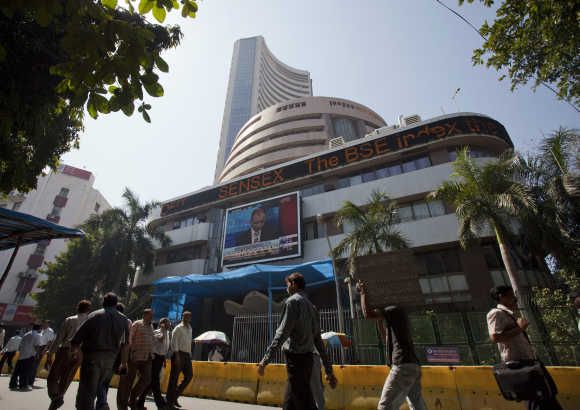
Some traders make a reasonable living playing the day-trading game.
The Nifty runs through a daily high-low range of roughly 77-85 points. This is an averaged daily swing of about one per cent.
A day-trader who picks up this movement could in theory, translate it into roughly 15 per cent profit, given the leverage on a standard futures contract with a lot of Nifty 50.
In practice of course, no day-trader picks up the entire movement every day. There's brokerage to contend with as well. Many stocks, commodities, currencies and indices offer similar or higher levels of volatility and also higher levels of leverage.
Most day-traders lose money. However, some traders do make a reasonable living playing the day-trading game. A select few (very few) make large sums. How do they do it? 
It is not by being correct in judging trends markedly more often. It is by using disciplined systems that impose rigid stop losses and strict position sizes and prevent them from over-trading.
A day-trader is almost literally betting on the toss of a coin. In contrast to the coin-toss, the odds are stocked against day traders due to the brokerage element. The price will go up, or it will go down in a given session.
If the price doesn't move much in either direction, the trader loses the brokerage. If the price moves in the opposite direction to that desired, the trader loses both capital and brokerage.
It is roughly an even money bet in that the price is almost equally likely to go in either direction. There are only a few things that the trader can control. The key is the amount he is prepared to lose. Control over that is what transforms an even-money bet into a potential winner.

Let us say that a Nifty day-trader guesses the trend correctly every second session on balance. He hopes to pick up a winning move of 0.5 per cent on every second session. Given leverage, this 0.5 movement would mean profits worth about 6.5-7 per cent of his capital, after brokerage.
He can afford to lose up to say, five per cent (inclusive of brokerage) on the alternate sessions where he does lose capital. Working backwards, he needs to stop losses at about 0.3 per cent of the Nifty.
The “even-money” bet can therefore, become profitable only at extremely thin margins.
The day-trader is willing to be stopped out if his position runs 30 points against him, in the hope that he can glean a return of 40 points or better. In practice, many jobbers work in even smaller timeframes, with even thinner margins than the examples given above.

Of course, the trader hopes that he will be right somewhat more often than 50 per cent of the time. Also, when the position is running in his favour he hopes to clear a larger return on big trending moves. But he also has to accept that sometimes there will be a big gapped move against him and he will lose more than his acceptable stop-loss.
The thought processes are similar when looking at other markets and contracts. The trader has to set realistic profit goals and realistic stop-losses.
Obviously, a positional trader who is working across longer time frames will be setting different stops. Somebody who is using different instruments such as options, which have different leverages and risk:reward ratios will also set different stops.
But the underlying principles remain the same. Ensure that the aggregate of losses from losing trades is less than the aggregate of profits from winning trades.
Research the historical record before you decide to trade a particular contract. Back-test your strategy. If the margins seem too thin for your personal comfort, avoid trading.
The author is a technical and equity analyst.











